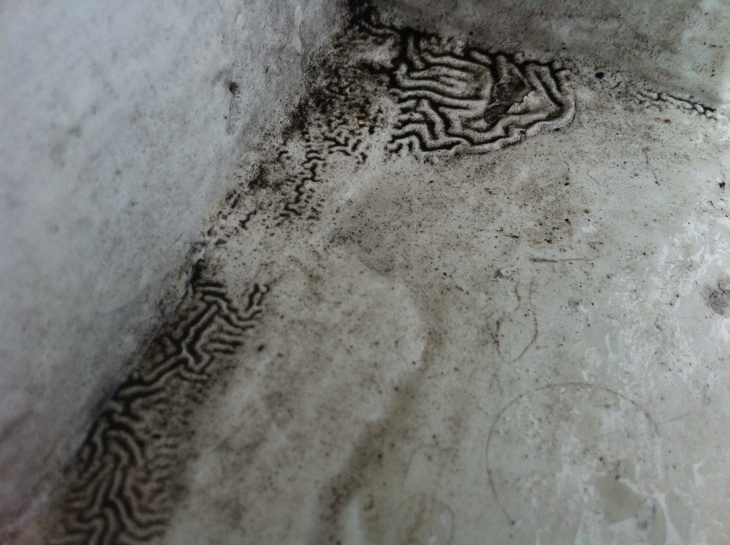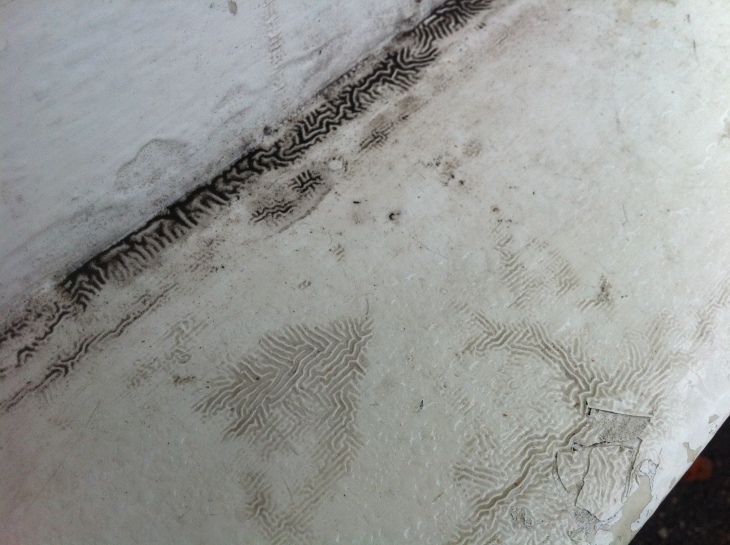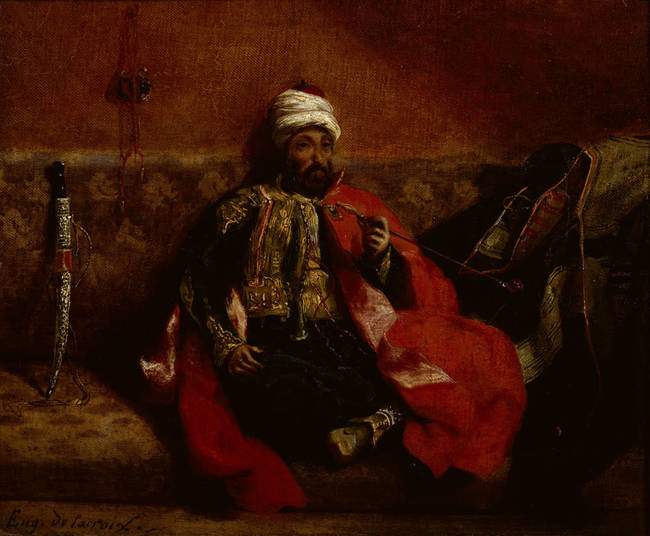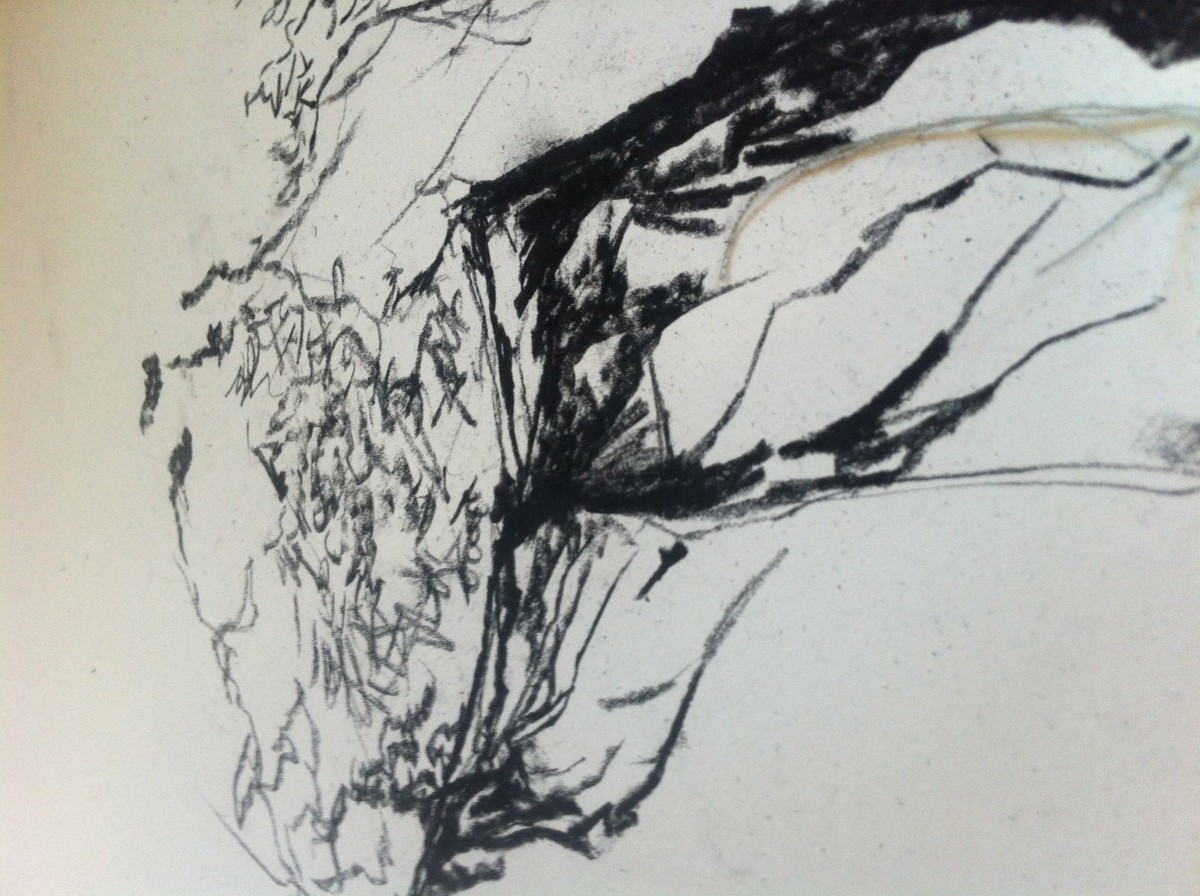Today’s lecture was extremely compelling to me as we considered the concept of Orientalism. Although I have never explored this idea theoretically, I have always had a curiosity or interest in questioning how the western world sees and comments upon what is different. Seeing this within modern society, it is enlightening to reflect on how this ideology has played out, developed and been dealt with throughout time.
It seems as though Westernisation as term has evolved from dictating geographical location to defining what is ‘progressed’ and ‘better’. This therefore infers that the opposite might give the term Eastern connotations of being primitive and low. Edward Said proposes the term ‘Other’ as the way in which all that is derivative of the Orient is viewed by western society. He comments on the mixed relationships Europe has with this society of ‘Other’, often its own cultural contestant. In order to better understand this we need to question perspective and what the vested interest could be in presenting the ‘exotic’ in such a critical way. Despite this there have been western figures such as Abraham Antequil Duperon and Baron de Mantesquien that have studied and looked to complex Eastern systems in order to critise and bring to focus the short comings of Western democracy. Those who were truly committed to exploring and presenting the Eastern world objectively often had their work suppressed due to its displacement within the established narrative of the time. These theorists had visited the subject of their study and ingrained themselves in the language. Instead of learning from this authentic research it is instead the manufactured work of James Mill, ‘The History of British India’ who’s ideologies became the fundamental drive behind the shaping of Britain’s India policies. The desire to present an India that was archaic and static suited economic position by concluding the citizens were not ready for self government. In the same way, this is a narrative that is still apparent today: when we look to the Middle East, and how the need for democracy served as an excuse for invasion.
Whilst considering how the west views ‘strangers’, it is crucial to take a shift in viewpoint and consider how we too are viewed as ‘other’ to someone else. Western literature, art and knowledge especially within the 19th century portrayed the Orient as a sensual, mystical, barbaric, undemocratic and irrational realm: everything the narrative of the West was not. The problem here is that these narratives can be turned into a self-fulfilling prophecy with enough fuel.

Delacroix, E. The Women of Algiers, Oil on canvas

Gerome, J. Moorish Bath

Ingres, J. The Turkish Bath

Ingres, J. Odalisque with a Slave
Paintings are instrumental in understanding, visually, how the West looked to degrade and position themselves above the Orient within history. These images shown and discussed within the lecture provoke some very curious reflections of the presentation of women within this division of global society. An extraordinary numbers of points of discussion arise with these images yet these are only a few excerpts from the whole crafted narrative of the age. Within each, a commonality is seen in how skin colour and tone is exaggerated to immediately distinguish importance and status. Even within this culture, that is viewed as beneath western society, there is a hierarchy, with the black woman of Gerome’s Moorish Bath, exposed physically, subservient, at the very bottom of this ranking.With Ingres’ Odalisque with a Slave, the title immediately evokes roles of power and servitude. The reclining nude female is clearly a courtesan, being waited on by the people of the eastern world she seems to be set in. Her body is open and she appears aware and comfortable with the gaze of the viewer. The hypocrisy here is that within Delacroix, The Women of Algiers the women are more covered in contrast yet their posture and type of clothing suggest immorality and intends to questions their worth. Seen sitting relaxed on the floor, in these primitive poses they are entirely stripped of their femininity as women of the age would not have been seen on the ground, their clothes would simply have not allowed for it.
These images are aligned with the narrative of the time to propagate meaning and to exist an affirmation of white superiority. Even if this is not seen literally in the scenario of the painting, the way the western painter controls his subject and presents these women of the Orient, demonstrates layers of prejudicial and exploitive behaviour of the western world. Ingres’ The Turkish Bath of 1862 is an overwhelming example of this attitude. These foreign women are seen in an almost fantasied manner, the composition suggesting the very idea of a peephole. Their bodies relaxed convey oblivion, therefore leaving them vulnerable and inferior to their western onlooker. The concept of the ‘gaze’ is that the act of looking is never neutral, whoever poses it holds power especially if the watched person is unaware. It is the body of ‘Other’, where the sexual frustration of the west is played out, thoughts that were not subjected to their own women. Unless they were courtesans the middle and working class women of the time were not sexualised, their clothing oversized as if to dwarf or cage the woman. Not only is the presentation of these women in such work of art massively contemptuous, these men use the tools of visual language to manipulate a situation to suit their base desires. Seen again through imagery, within the animated movies Pocahontas and Mulan these oriental tales are presented by westerners of imagined worlds, that even the native would not necessarily recognise.
This judgement of sexual immorality was not solely reserved for the women, within literature the scenario of a black man assaulting a white woman speaks volumes of the division between these worlds- how ‘other’ is the enemy and not to be trusted. Individuals from the Orient region were presented in this prejudicial light and often within visual language degraded to the status of animals. The film King Kong was often critiqued and thought to be about questioning the ‘irrationality’ of interracial relationships.

Johan Zoffany, Colonel Mordaunt’s Cock Match c.1784-6 Oil on Canvas
This exploration truly resonated with me and issues discussed when addressing Delacroix’ image Turk Smoking on a Divan fed their way into how I viewed works later in the gallery space. The anonimity of the title Turk serves to disregard the people as a generic whole, becoming cartoon images to the narrative. When sitting down the western man is still active, in roles of reading and writing, whereas here the man is entirely relaxed, passive and his purpose is inconsequential. On a visit to the Tate Britain, I saw how curation affects meaning. In a room that presents very ‘British’ people, a painting featuring Indians stood out. The curators simply give the accompanying text, ‘This unruly sporting event exemplifies the looser moral codes of British colonial life’. This sense of depravity is unavoidably obvious in the picture, but I query whether this is due to the artist’s interpretation and possibly a vested interest. Within the chaotic scene there is so much to take in but also much to analyse. What strikes me immediately is the distinction, the Indians squatted on the bare ground are seen as heaving mass of bodies and the westerners clearly uncomfortable, seated on a higher level. Their bodies and their gaze are seemingly directed away from the natives and looks of distain are blatant on the faces of the pristinely dressed western men. With these men entirely separate and disengaged from the chaos this indicates it is solely the Indians that are corrupt and barbaric. This presentation of the time seems to me as yet another act to reduce people to a set of judgements that allow for their mistreatment by a condemning society. One that does not itself accept but forces acceptance from others whose entire customs and beliefs are trivial within the manipulated pursuit for personal gain.
Bibliography
Images
Delacroix, E. (1832) Turk Smoking on a Divan [online image]. Available at: <http://www.imagekind.com/A-Turk-smoking-sitting-on-a-sofa-by-Delacroix-art?IMID=0d3d87df-faab-4965-a487-4db3cf97d51f> [Accessed 15 Nov 13]
Delacroix, E. (1834) The Women of Algiers (in Their Apartment) [online image]. Available at: <http://makeyourideasart.com/art/masters-of-art-eugene-delacroix-1798-1863/> [Accessed 15 Nov 13].
Gerome, J. (1870) Moorish Bath [online image]. Available at: <http://www.mfa.org/collections/object/moorish-bath-32124> [Accessed 15 Nov 13].
Ingres, J. (1842) Odalisque with a Slave [online image]. Available at: <http://keephistoryalive.wordpress.com/2012/12/19/art-history-wednesday-la-grande-odalisque/odalisque-with-a-slave-ingres/> [Accessed 16 Nov 13].
Ingres, J. (1862) The Turkish Bath [online image]. Available at: <http://fineartamerica.com/featured/1-ingres-turkish-bath-granger.html> [Accessed 16 Nov 13].
Zoffany, J. (c.1784-6) Colonel Mordaunt’s Cock Match. Oil on Canvas. London: Tate Britain.
Books
Mill, J. (1997) The history of British India. London: Routlege/Thoemmes.
























 I found this illustration to be poignant, the animated quality is exaggerated and stereotypical in its representation of characters with the intention of a satirical tone. This physical cutting and claiming is an act of power. The concept of dividing land is one that I have genuinely contemplated before. When looking at the world map, it makes no rational sense that the organic shapes of the land could be dived with such harsh straight lines, as if someone has taken a ruler directly to the printed image. If so, who? and with what motive? When reflecting it is clear, these manmade alterations are only present in certain regions and this is often related to politics. When dealing with geography, the inhabitants of these lands are irrelative and come as a part of the package, either to the hindrance of the conquerer or benefit through means of exploitation.
I found this illustration to be poignant, the animated quality is exaggerated and stereotypical in its representation of characters with the intention of a satirical tone. This physical cutting and claiming is an act of power. The concept of dividing land is one that I have genuinely contemplated before. When looking at the world map, it makes no rational sense that the organic shapes of the land could be dived with such harsh straight lines, as if someone has taken a ruler directly to the printed image. If so, who? and with what motive? When reflecting it is clear, these manmade alterations are only present in certain regions and this is often related to politics. When dealing with geography, the inhabitants of these lands are irrelative and come as a part of the package, either to the hindrance of the conquerer or benefit through means of exploitation.





















































































































